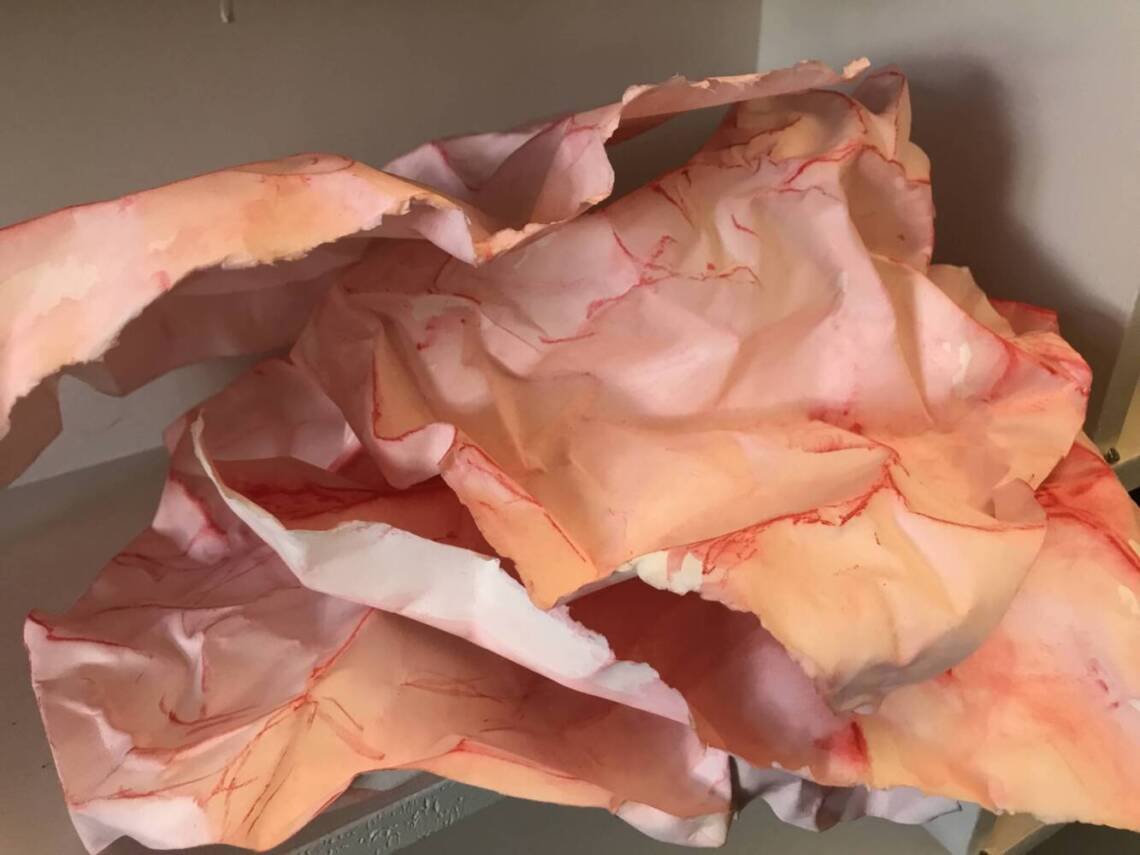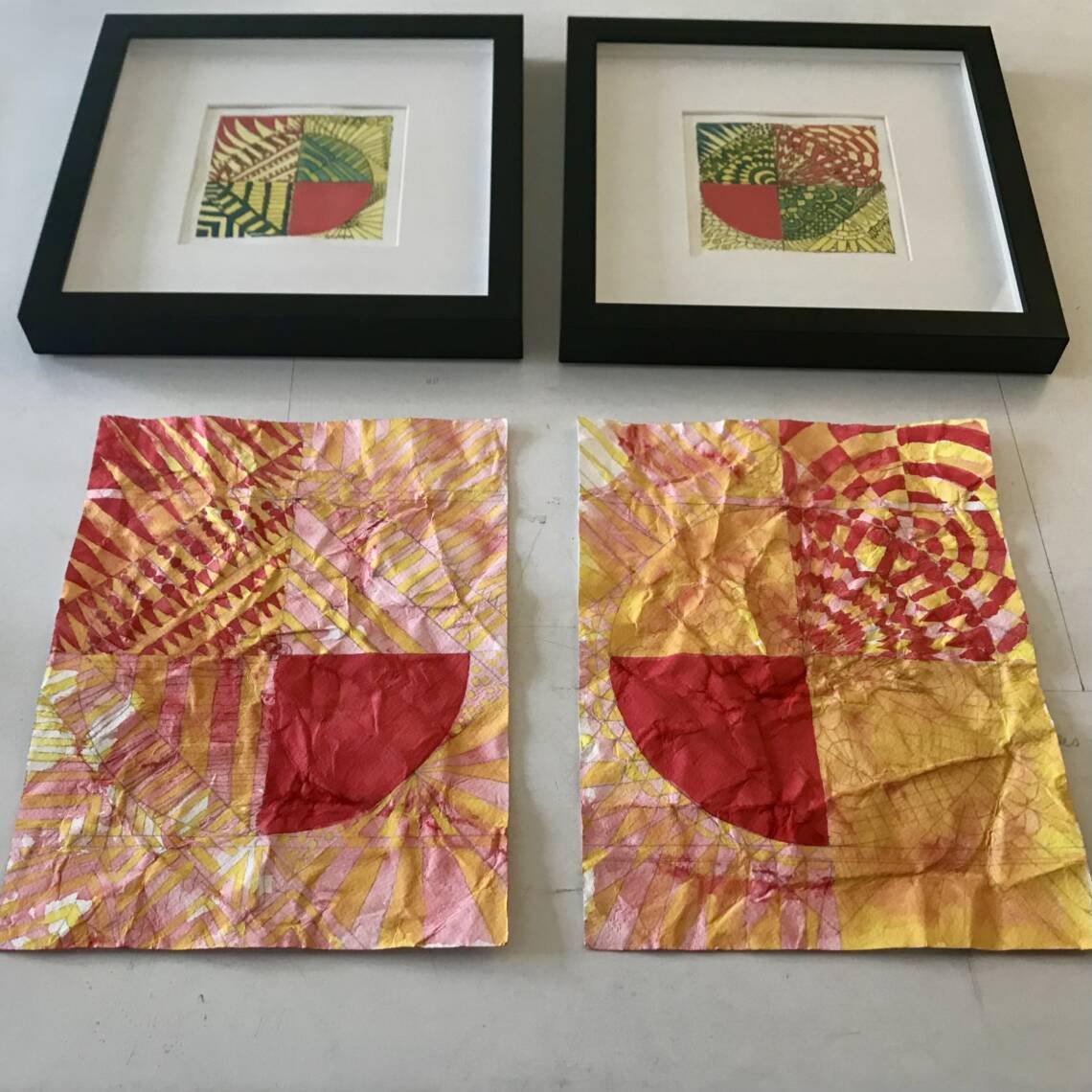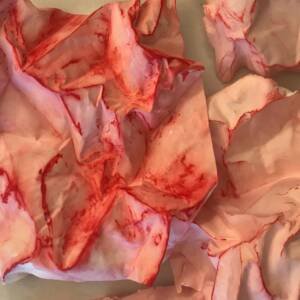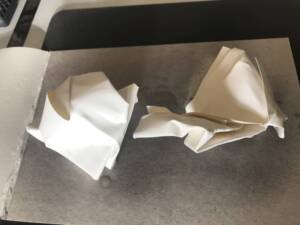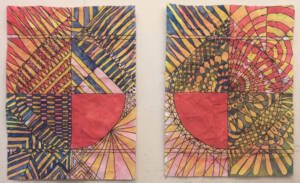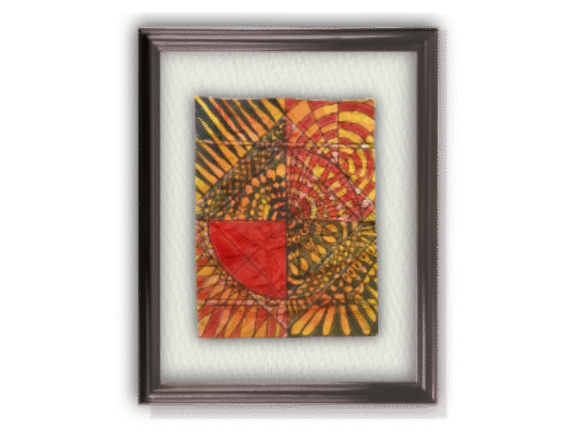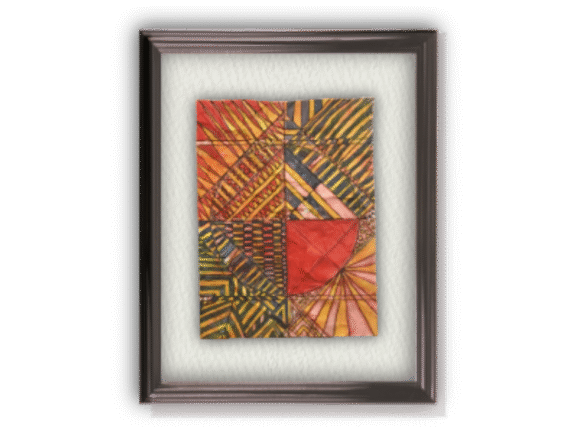Why work on rough paper?
I chose to work on rough paper for the Red Playground collection because I’ve learned that solving problems from the extreme pretreatment boosted creativity .
Rough Paper Problems
Following are the problems I encountered by working with rough paper to make Red Playground No. 8 and No. 9. Additionally, I’ve included the solutions.
Problem 1: Drawing contiguous lines with graphite
Despite using a perfectly round plastic clock face and a straightedge as drawing aides, the rough support made it nearly impossible to create good, clean lines and shapes with a graphite pencil.
Solution 1
I reinterpreted the design inspired by ‘Can Red Come Out to Play No.7 and 8’. Consequently, I decided to find a way to work with them to celebrate the rough paper.
Moreover, the resulting lines and shapes were rough, unlike their forebears, thereby introducing the “something new” for which I was searching.
Additionally, Inktense compensated for lines and shapes I could not draw with graphite, followed by adding linear elements with the pigment ink pen to add complexity.
Problem 2: Filling in shapes with Inktense
Intensive paper pre-treatment caused the Inktense to wick beyond past the graphite boundaries I did place. Accordingly, the clean lines and shapes I so much enjoyed from ‘Red Playground-Finish what you started’ would not be replicated in these new works.
Solution 2
Therefore, I intensified the strength of the Inktense solution to avoid further stressing the paper with more fluid. Moreover, I could end up with interesting effects from the wicking. However, it would require even more imagination.
Further, I imagined that the blue Inktense that I planned to apply in the next session would solidify the work with the final layering of primary colours.
Problem 3: Add a sense of form
I desired that ‘Red Playground 8 and 9’, would look more like ‘Red Playground – Finish what you started’ This would mean to I’d need to give them a sense of form. However, the rough paper would, indeed, make this challenging.
Solution 3
In the end, I opted to focus on pattern. I would find a way to add dimensionality to the red segment in each work. In the end I appreciated the difference in the sense of form contained in ‘Red Playground – Finish what you started.’ Furthermore, it gave me another chance to explore, solve problems, and expand my creativity.
Problem 4
Early on, I included bands at the top and bottom of both Red Playground No.8 and No.9 as potentially to unifying the two works. Plus, they might be a way showcase the beautiful pretreatment of the paper.
Nonetheless, in my creative excitement, I accidentally added Inktense to the bands. Therefore, I had to pivot.
Solution 4
The lines will look awkward if I do not apply more Inktense. On the other hand, adding more colour affords greater opportunity to play with this design element.
Working on Rough Paper, The benefits
By actively seeking and finding solutions to working on the rough paper I was pleasantly surprised by the plethora of ideas birthed that night be used on future works.
In the next session, blue Inktense goes on top of the prior strong yellow layer, thereby giving way to a green. Furthermore, I anticipate the contrast and busyness of the blue on top of the yellow and red will need to be toned down. Similarly, I need be sure there is balance in the chroma and patterns of on the quadrants of each piece as well as between the two works.
Then, finally, I need to work out form or dimensionality to the piece in order for it to have a relationship with ‘Red Playground – Finish what you started’.
I very much look forward to doing this. You can read the next post, and the video by clicking here.
More on the creative process
A good, simply written essay on the creative process that may be helpful, titled, ” Five Key Stages of The Creative Process,” may help you in your creative journey.
“The creative process may seem like an abstract concept, but it does have a structure. We break it down in stages here”, writes artist and author, Wendy Rose Gould. The article can be read by clicking here.
Further, I invite you to find out more about my processes creating “Red Playground 8 & 9” by clicking on the boxes below.

